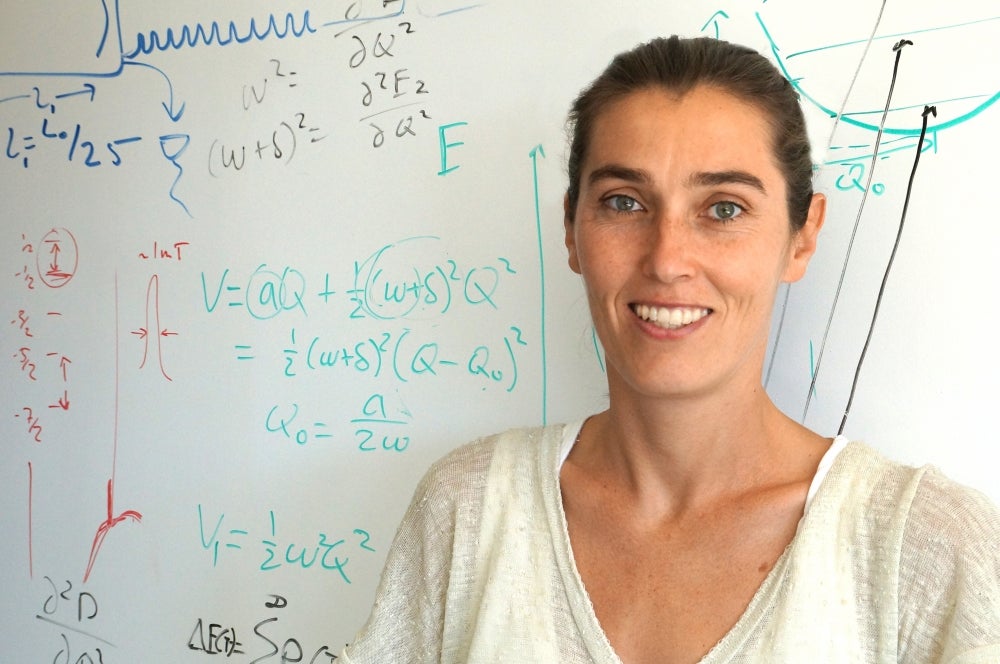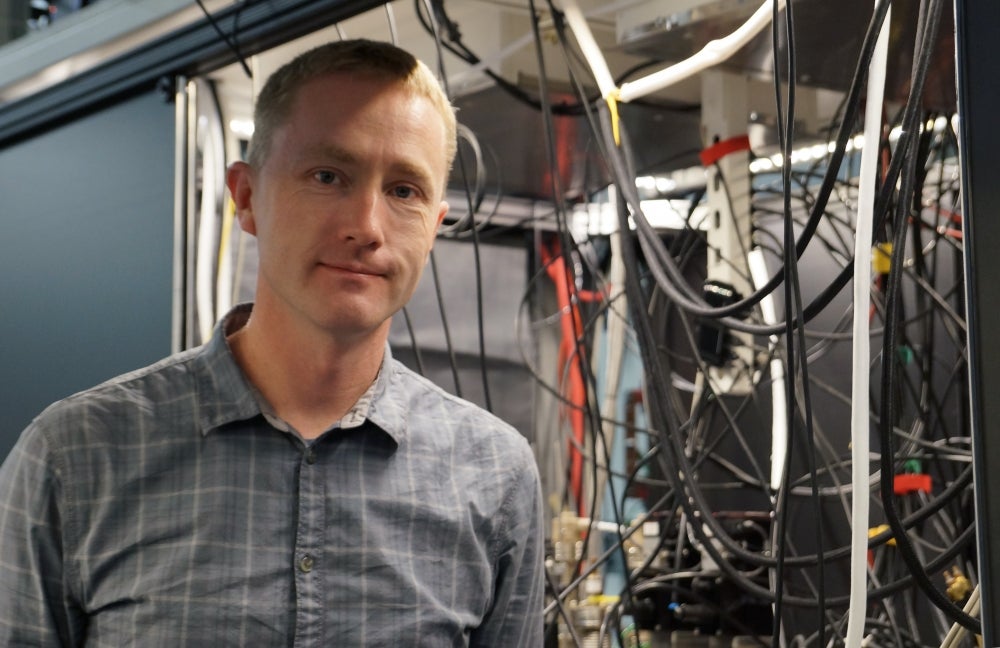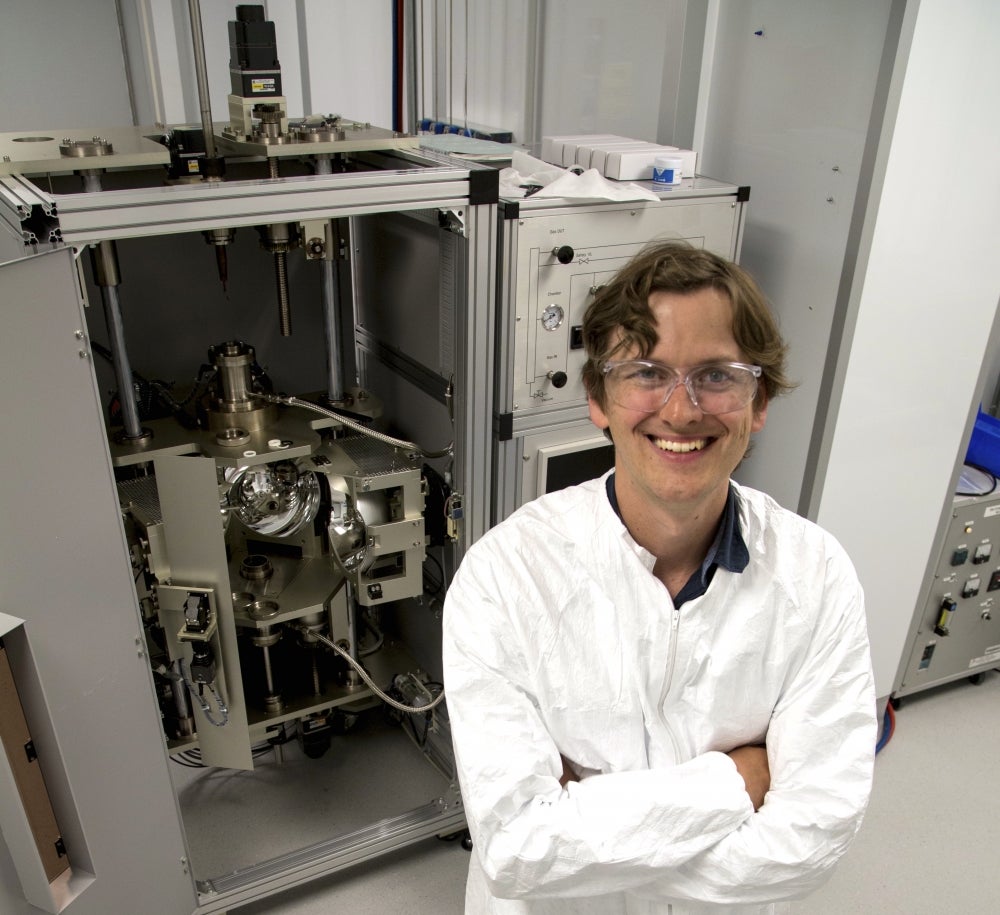
Accelerating Quantum Research



It’s a great time to be a quantum scientist. Steadily improving technology coupled with brilliant innovations are opening the door to the demonstration and understanding of phenomena and behaviors that once were only hypothesized. These insights are poised to fuel the next generations of technology while revolutionizing our knowledge of the Universe.
At UC Santa Barbara, empirical quantum research has received a major boost, thanks to tech businessman Roy T. Eddleman. His gift of $1.5 million establishes the university’s Roy T. Eddleman Center for Quantum Innovation, promising the “acceleration of progress in quantum science and engineering research, education and programs.”
“Over the past two years, I have had the honor of meeting with Mr. Roy Eddleman, listening to his vision and interest in science in general, and quantum science and materials in particular,” said UC Santa Barbara Chancellor Henry T. Yang. “Roy has visited our campus often, meeting with our faculty colleagues, touring our labs and sharing with us his insights and knowledge in quantum science and engineering.
“Roy is instrumental in helping to develop our campus as a top leader in the areas of quantum science and engineering nationally and internationally,” Yang continued. “Our campus is fortunate to have such a long-term relationship with Mr. Eddleman centered on his transformative vision for the Roy T. Eddleman Center for Quantum Innovation. We are immensely thankful for his dynamic participation and visionary guidance, and energized by his generous investment in our research, teaching and programs in quantum innovation.”
The three-year gift supports a variety of quantum science-related activity, including research, postdoctoral and graduate fellowships. Eddleman Center activities will be coordinated by professors Ania Jayich, David Weld and Stephen Wilson.
“UC Santa Barbara has so many brilliant people, you can’t even begin to think of the possibilities of what they might discover, invent or find in the future,” Eddleman said.
“We are thrilled and honored to receive Roy Eddleman’s generous gift for the advancement of quantum science on UCSB’s campus,” Jayich said. “Over the years it has been a true pleasure to witness Roy’s passion and vision for science; and now to see UCSB be the target of Roy’s philanthropic efforts is an immense compliment. The Roy T. Eddleman Center for Quantum Innovation will incubate new scientific directions, build partnerships and train a quantum-smart workforce to drive fundamental discoveries and harness them for emerging quantum technologies.”
Emergent Research
This moment in quantum science, in which technology is emerging to generate and examine new aspects of the Universe, is a significant one for Eddleman, who built his life’s work around scientific instrumentation and equipment with his company Spectrum Laboratories (now Repligen). A chemist by training, Eddleman once traced the progression of his own discipline with a collection of alchemical art — a series of 17th and 18th century genre paintings that collectively depict the emergence of chemistry as an empirical science, from its roots in alchemical explorations.
“They represent a lot of the people experimenting with the revelations that had come out of alchemy,” he said. “It turned into chemistry when we started measuring everything relative to quantitative and qualitative things.” The knowledge of our Universe then exploded from the concept of four elements to more than 100, as did the instrumentation and expertise to manipulate them, he added.
We’re witnessing a similar moment with the quantum sciences, “but it’s logarithmically bigger,” Eddleman said, as researchers dig deeper into the universe, into the world of atomic and subatomic length scales and the bizarre phenomena therein.
Jayich, for instance, has developed a device that uses a flaw in a diamond’s atomic crystal lattice (called a nitrogen-vacancy center) to hold and trap atoms of interest on the diamond’s surface, without destroying their fragile coherence. Physicist David Weld, meanwhile, uses ultracold atoms and light to study quantum mechanics in action. Materials scientist Stephen Wilson, for his part, searches for the materials that can host quantum phenomena. These are but a few of the minds behind the quantum movement at UC Santa Barbara.
“UCSB uniquely hosts a broad range of research and leaders in the field of quantum science,” said Wilson, who along with Jayich heads the UC Santa Barbara NSF Quantum Foundry, a federally supported project to discover and develop quantum materials. “Faculty research here ranges from the truly fundamental, such as the discovery of new quantum phenomena, to technological innovation that harnesses the strange properties of quantum states in next-generation electronics.”
The emerging knowledge joins proven expertise at UCSB in realms such as quantum computing, optics and photonics, solid-state lighting and two-dimensional systems, among others.
“We don’t know when these things are going to explode into something incredibly beneficial for man, but they will,” said Eddleman, pointing to the successes of LED lighting, quantum computing, and other technologies that harness quantum behaviors and properties.
“UC Santa Barbara is one of the leading universities in the world who understands it better than practically everyone,” he continued. “What we need to do is find young, brilliant grad students and undergrads who are just deciding what they are going to pursue, and hopefully lure a lot of them into the quantum sciences, because it’s an incredible world there.”
It’s already happening, according to Weld. “Discussions and interactions catalyzed by Roy’s generosity have already ignited collaborations on campus and beyond; now with the Center as a focal point, we are looking to a wide variety of new activities,” he said. “The Eddleman Center for Quantum Innovation’s support will enable both exploration of new scientific frontiers and training and inspiration of the next generation of leaders in quantum science.”
UCSB is one of three quantum research powerhouses to receive Eddleman’s philanthropy — UC Irvine and the California Institute for Technology have been presented with similar investments for quantum science.
“We’re beginning to open a Pandora’s box into a world so different from our own,” Eddleman said. “It’s a new age.”



